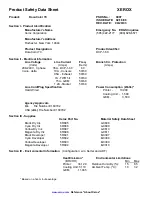
278
9.8.1.
Opening and Closing
At the time the transmission channel is opened there is an exchange of commands to ensure that the hosts
are communicating with the hosts they think they are. The following two commands are used in the
transmission channel for opening and closing:
HELO:<SP> <domain> <CRLF>
QUIT:<CRLF>
In the HELO command, the host sending the command identifies itself; the command may be interpreted as
saying, “Hello, I am <domain>”.
9.8.2.
Mail (MAIL)
This command is used to initiate a mail transaction in which the mail data is delivered to one or more
mailboxes.
9.8.3.
RECIPIENT (RCPT)
This command is used to identify an individual recipient of the mail data; multiple recipients are specified by
multiple uses of this command.
9.8.4.
Data (DATA)
The receiver treats the lines following the command as mail data from the sender. This command causes
the mail data from this command to be appended to the mail data buffer. The mail data may contain any of
the 128 ASCII character codes. The mail data is terminated by a line containing only a period, that is the
character sequence “<CRLF>.<CRLF>”. This is the end of mail data indication.
9.8.5.
Send
This command is used to initiate a mail transaction in which the mail data is delivered to one or more
terminals. This command is successful if the message is delivered to a terminal.
9.8.6.
Reset (RSET)
This command specifies that the current mail transaction is to be aborted. Any stored sender, recipients,
and mail data must be discarded, and all buffers and state tables cleared. The receiver must send an OK
reply.
9.8.7.
Verify (VRFY)
This command asks the receiver to confirm that the argument identifies a user. If it is a user name, the full
name of the user (if known) and the fully specified mailbox are returned.
9.8.8.
Quit (QUIT)
This command specifies that the receiver must send an OK reply, and then close the transmission channel.
9.8.9.
Reply Codes from SMTP Server
SMTP is independent of the particular transmission subsystem and requires only a reliable ordered data
stream channel. The SMTP design is based on the following model of communication: as the result of a
user mail request, the sender-SMTP establishes a two-way transmission channel to a receiver-SMTP. The
receiver-SMTP may be either the ultimate destination or an intermediate. SMTP commands are generated
by the sender-SMTP and sent to the receiver-SMTP. SMTP replies are sent from the receiver-SMTP to the
sender-SMTP in response to the commands.
Содержание e-STUDIO190F
Страница 1: ...SERVICE MANUAL PLAIN PAPER FACSIMILE e STUDIO190F File No SME060019A0 R060521B7301 TTEC Ver01_2006 08 ...
Страница 5: ...5 ...
Страница 21: ...21 1 2 Control Panel For Americas e STUDIO190F ...
Страница 36: ...36 12 Remove 3 Screws Y3 13 Remove 4 Screws Y3 14 Remove the Paper Guide 452 15 Remove the CIS 440 Assembly ...
Страница 78: ...78 2nd G3 UF 8K G3B A A Vxxxxx YC Firmware Version V1xxxx AA Fixed 2nd G3 Model Number YC Fixed ...
Страница 119: ...119 Sensor and Switch Location ...
Страница 185: ...185 6 3 Printer Receive Mechanism 6 3 1 Component Layout and Paper Path ...
Страница 227: ...227 CN236 16 N C PNL2 PCB CN252 16 No Connection PNL1 PCB Pin No Signal Name Destination Signal Waveform Function ...
Страница 234: ...234 7 Installation Refer to Quick Guide For Facsimile and Copy Functions ...
Страница 297: ...297 memo ...
Страница 299: ...299 memo ...
















































